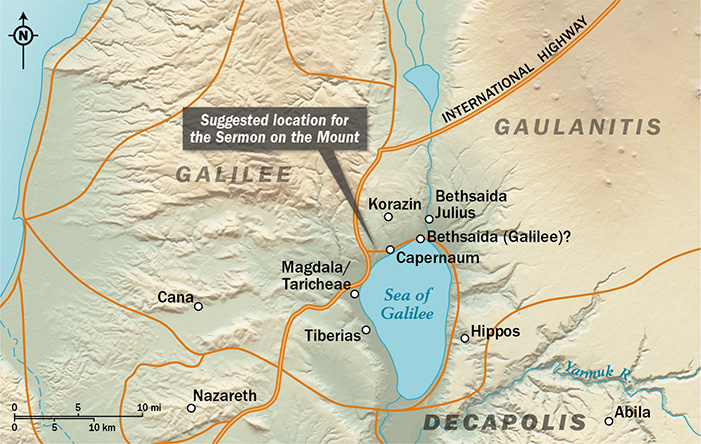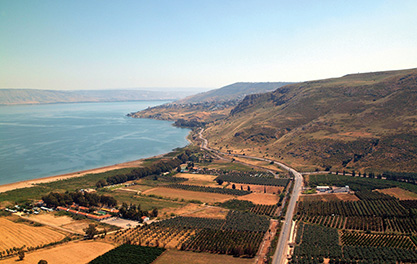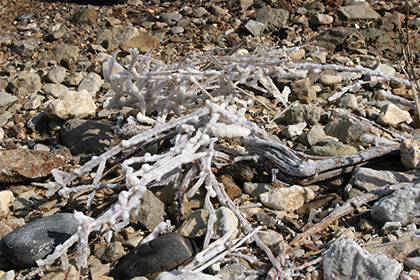
SALT, LIGHT, AND A CITY ON A HILL
MATTHEW 5:13–16
Jesus’s every intention was that the disciples whose lives he touched would have a positive effect on the lives of the people they touched. That is why he used this language when addressing them: “You are the salt of the earth. But if the salt loses its saltiness, how can it be made salty again? . . . You are the light of the world. A city on a hill cannot be hidden” (Matt. 5:13–14). We will see that he chose to use these metaphors where he did for a reason.

Lamp on lamp stand. Jesus used the imagery of lamp stands such as this one in his teachings on the importance of putting light in a place that removes as much darkness as possible.
© Dr. James C. Martin. The Cairo Museum. Photographed by permission.
As Jesus taught throughout Galilee, large crowds came to hear him speak and to receive healing from their physical ailments (Matt. 4:23–25). On one occasion he spoke to the crowds on the hillside above the Sea of Galilee (Matt. 5:1; 7:28). He covered a wide range of topics in the extended discourse often called the Sermon on the Mount (Matthew 5–7), including salt, light, and a city on a hill.
While Jesus taught from this location, those gathered were familiar with both Magdala and Hippos—two important cities situated on the Sea of Galilee. Magdala was associated with salt and Hellenized Judaism.1 Hippos was associated with Gentiles and was a city built on a hill. With these cities in mind, Jesus shaped his powerful lesson.
Magdala was on the northwestern plain of the Sea of Galilee. Fish harvested in that region of the lake were transported there to be processed with salt and then transported throughout the Roman Empire. So famous were these salted fish that came from Magdala that the Romans called the city Taricheae, which means “salted fish.”2
Salt was an important and valuable commodity in New Testament times, which is why Jesus used the pertinent imagery of salt losing its value and being “no longer good for anything, except to be thrown out and trampled by men” (Matt. 5:13). The salt used in Magdala’s fish processing was for the purpose of preservation; however, salt was also mixed with dung and used for fuel in ovens.3 Once the salty dung mixture was burned, the salt residue lost its saltiness and no longer had any effect (Luke 14:34–35). So just as salt had an effect on the fish and in the burning of dung fuel, so his followers were to have an effect on others.

Sermon on the Mount

The Decapolis city of Hippos is situated on a hill on the east side of the Sea of Galilee, opposite Capernaum.
The Gentile city of Hippos was located on a high hill above the east side of the Sea of Galilee. It was in fact a “city on a hill” that, like light, was not intended to be hidden (Matt. 5:14). The prominence of this city expressed Gentile superiority over the region with trade connected to Damascus.4 As a Decapolis city, it was designed to propagate, influence, and direct Greco-Roman culture and ideology.
Probably speaking of Hippos in this metaphor, Jesus stated that his listeners were not to hide themselves any more than light is to be put under a bowl or a city on a hill is to be hidden. As his followers, they would not blend into the woodwork of society but were to be agents in affecting the world around them.

The city of Magdala, located along the northwestern shore of the Sea of Galilee, was known by the Roman world as Taricheae (meaning “salted fish”), which was famous for the salted fish that was prepared and exported from there.

Salt from the Dead Sea could be used in the salting of the fish from Taricheae (Magdala).